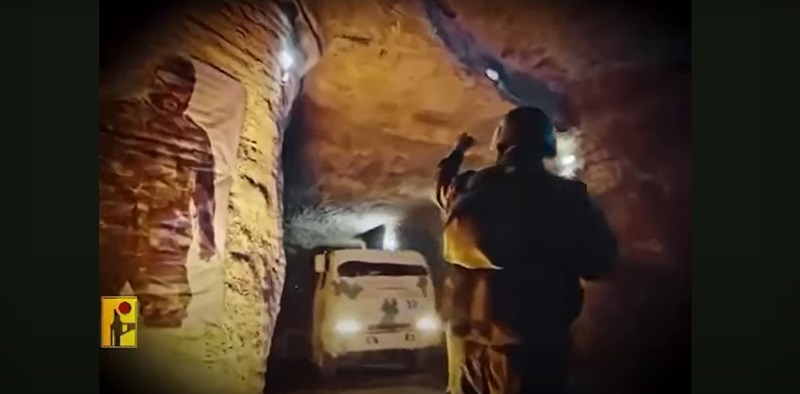Hezbollah has reportedly sustained significant damage from Israeli attacks, but claims have emerged that the group is preserving its core strength by relying on extensive underground tunnel networks, built with assistance from North Korea and Iran.
According to Reuters on September 25, Hezbollah, following the 2006 war with Israel, constructed a vast tunnel network stretching hundreds of kilometers with support from Iran and North Korea. Some of these tunnels are large enough to transport heavy equipment, allowing Hezbollah to withstand Israel’s intense bombardment.
Last month, Hezbollah released a video showing trucks carrying rocket launchers and fighters moving through these tunnels.

While the Israeli military has destroyed tens of thousands of rockets, missiles, and drones in recent days through airstrikes on Hezbollah facilities in Lebanon, reports suggest that most of Hezbollah’s high-performance weaponry remains hidden deep within the tunnels.
Before the outbreak of war in Gaza last October, Hezbollah was believed to have stockpiled approximately 150,000 rockets and missiles. Experts also point out that Hezbollah has yet to deploy its more advanced weaponry, such as the Iranian-made Fateh-110 ballistic missile, capable of carrying warheads weighing 450–500 kilograms, indicating that the group is not close to surrender.
On September 22, Hezbollah forces were seen firing rockets in response to Israeli bombardment. This rapid retaliation, experts speculate, may have been made possible by the group’s use of tunnels to minimize damage.
Andreas Krieg, a senior lecturer at King’s College London, noted that Hezbollah’s tunnel network is far more robust than the tunnels built by Hamas in Gaza. While Hamas’s tunnels are constructed in sandy, weak soil, Hezbollah’s tunnels are dug deep into the rock and mountains, making them more challenging to access and destroy. “They are far less accessible than in Gaza and even less easy to destroy,” Krieg said.

Despite Israel’s carpet-bombing of Hezbollah positions across Lebanon and targeted assassination campaigns against its top leaders, experts suggest that Hezbollah’s flexible command structure allows for quick replacements, making it difficult to dismantle the group. For instance, sources familiar with Hezbollah reported that Ibrahim Aqil, the commander of Hezbollah’s elite Radwan unit and its second-in-command, was killed in an Israeli airstrike on September 20, yet a successor was immediately appointed.
Israeli military chief of staff Herzi Halevi claimed that Aqil’s assassination shook Hezbollah’s organization, but reports indicate the impact was minimal. A high-ranking security official, speaking anonymously, noted that Hezbollah’s ongoing rocket attacks on northern Israel indicate that its command structure remains intact despite Israeli airstrikes.
Krieg concluded, “This is the most formidable enemy Israel has ever faced on the battlefield, not because of numbers and tech but in terms of resilience.”
BY JIHYE KIM, YOUNGNAM KIM [kim.jihye6@joongang.co.kr]

![Korean President Yoon Suk Yeol just got ousted. What’s next? President Yoon Suk Yeol attends the opening session of the Ministerial Conference of the Third Summit for Democracy in March last year. The Constitutional Court upheld the National Assembly’s impeachment of Yoon, ousting him from office on April 4. [YONHAP]](https://www.koreadailyus.com/wp-content/uploads/2025/04/0404-Yoon-100x70.jpg)
![Korean President Yoon Suk Yeol ousted from office after unanimous Constitutional Court ruling President Yoon Suk Yeol, right, delivers his closing statement at the 11th and final hearing of his impeachment trial at the Constitutional Court in Jongno District, central Seoul, on Feb. 25. [CONSTITUTIONAL COURT]](https://www.koreadailyus.com/wp-content/uploads/2025/04/0403-impeach-100x70.jpg)
![Clovine accelerates global expansion in collaboration platform market Website of Clovine, a cloud-based project management provider [Screenshot]](https://www.koreadailyus.com/wp-content/uploads/2025/04/0403-clovine-100x70.jpg)
